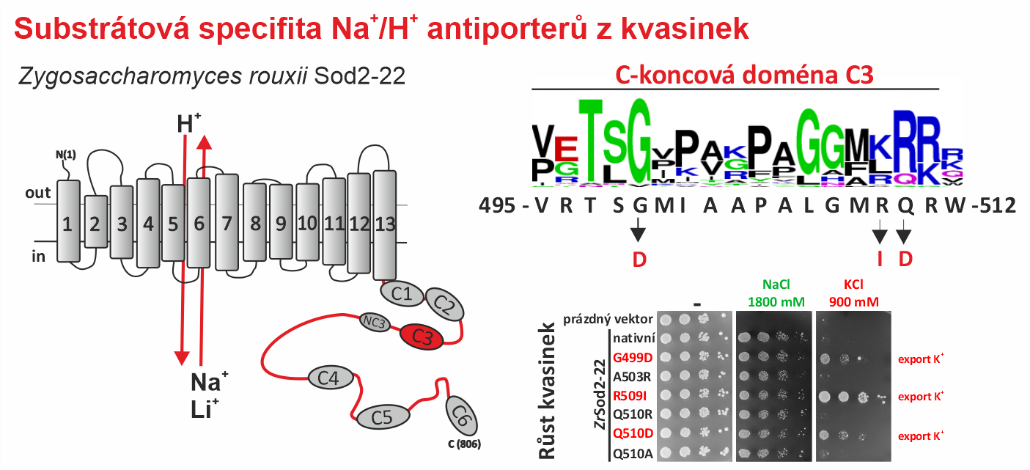Unravelling novel regulatory mechanisms in the human Na+/H+ antiporter NHA2
Sodium/proton antiporters are membrane proteins found in all living cells from bacteria to humans and play an important role in regulating intracellular pH and cation concentrations. Among these types of transporters belong also the NHA2 antiporter, whose activity affects a number of physiological functions, e.g. insulin secretion, sodium reabsorption in the kidneys or sperm motility. The NHA2 antiporter transports Na+ or Li+ cations across the membrane in exchange for H+ and its activity is specifically inhibited by phloretin. The properties and functions of all proteins result from their primary structure, i.e. from the sequence of amino acids from which the protein consists. In the family of Na+/H+ antiporters, NHA2 has a unique structure. It consists of 537 amino acids with 14 transmembrane domains and an unique hydrophilic N-terminus long 82 amino acid residues, whose structure and function have not yet been studied. Our new results published in the Protein Science journal revealed several new structural elements important for the NHA2’s function, including the unravelling a new regulatory role of the hydrophilic N-terminus.
We studied the human NHA2 protein and its mutated variants using its expression in a model eukaryotic organism, the yeast Saccharomyces cerevisiae, as well as using bioinformatic simulations (in collaboration with the laboratory of Prof. Nir Ben-Tal from Tel-Aviv University). We newly identified several amino acid residues important for antiporter selectivity (recognition and transport of Na+ and Li+ cations) and for transport of protons. Furthermore, we determined the place in the protein structure where the phloretin inhibitor binds. We also revealed that the unique hydrophilic N-terminal part of the protein has an important (autoinhibitory) role in regulating the transport activity of NHA2, because truncations of the first 50 - 70 residues of the N-terminus doubled the transport activity of the antiporter. Our results also show that the new expression system for NHA2 in yeast cells can be useful for a rapid screening of SNP´s effects on NHA2 activity, and/or to test new compounds influencing the function of NHA2, similarly as phloretin.

Velazquez D., Prusa V., Masrati G., Yariv E., Sychrova H., Ben-Tal N. and Zimmermannova O. (2022): Allosteric links between the hydrophilic N-terminus and transmembrane core of human Na+/H+ antiporter NHA2. Protein Sci: e4460. IF = 6.993 DOI
